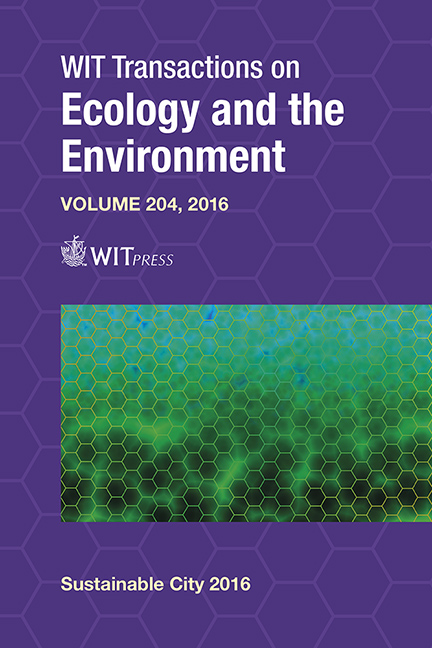Strategies For Optimizing Meso-scale Spatial Layout Based On Travel Demand
Price
Free (open access)
Transaction
Volume
204
Pages
12
Page Range
117 - 128
Published
2016
Size
738 kb
Paper DOI
10.2495/SC160111
Copyright
WIT Press
Author(s)
Y. Lu, X. Zhu
Abstract
Against the backdrop of the marketization of residential houses and the constant expansion of the scale of the city, traffic jams are becoming more serious, and the time consumed for travel by residents of large cities is prolonged. Areas of production are separated from the residential areas. Travel which used to take place within the community is forced to the use of city roads, and residents are facing serious traffic jam problems. So the reduction of motorized travel has become an important issue. This paper took travel demand as an important factor to measure the quality of the living environment and applied a questionnaire survey to analyse total travel, travel modes and travel frequency of residents. Firstly, taking Guanggu Block of Wuhan as a research case, this paper adopted a questionnaire survey method to analyse the quantity, type and frequency of block residents’ travel and pointed out that 2 km is a critical distance, beyond which the number of journeys drops rapidly. Secondly, this paper compared the difference between ideal and practical travel frequency in different ranges of travel distance, showing that a considerable part of travel demand is not satisfied by land use in the meso-scale space. Thirdly, after identifying the current features of land use and the travel demand of Guanggu Block, this paper proposed that a functional mixture under a limited scale is an effective method to reduce the rate of motorized travel and unitize the meso-scale space. Moreover, in considering that much long-distance travel cannot be obviously reduced with mixed land use, it is necessary to arrange subway stations inside units of the meso-scale space. Finally, this paper proposed suggestions and strategies for optimizing the meso-scale spatial layout of large cities from the perspective of coordinating function and traffic.
Keywords
travel demand, land use, meso-scale space unit, non-motorized vehicle travel





